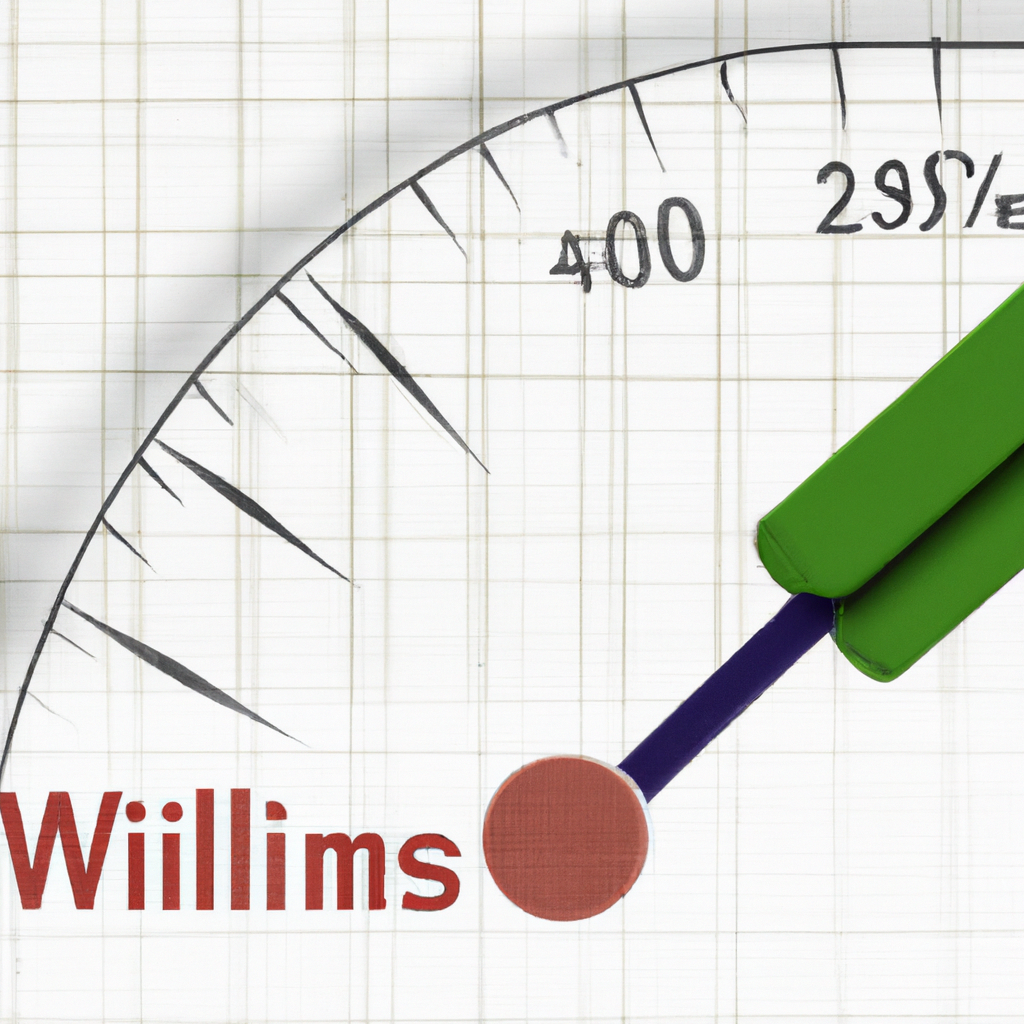Understanding Williams %R Indicator: A Powerful Tool for Traders
Introduction
When it comes to technical analysis, traders rely on a wide range of indicators to make informed decisions. One such indicator is the Williams %R, developed by renowned trader Larry Williams. Williams %R is a momentum oscillator that helps traders identify overbought and oversold conditions in the market. In this article, we will explore the usage of the Williams %R indicator and how it can be effectively used by traders.
What is Williams %R Indicator?
The Williams %R indicator is a versatile tool that measures the level of the latest closing price relative to the highest high and lowest low over a specific period, typically 14 periods. It oscillates between 0 and -100, with readings above -20 indicating overbought conditions and readings below -80 indicating oversold conditions. By analyzing these levels, traders can identify potential trend reversals and generate trading signals.
Using Williams %R Indicator
Here are some key ways traders can utilize the Williams %R indicator:
Identifying Overbought and Oversold Conditions
One of the primary uses of the Williams %R indicator is to identify overbought and oversold conditions in the market. When the indicator reaches or exceeds -20, it suggests that the market is overbought and a price correction or reversal may be imminent. Conversely, when the indicator drops to or below -80, it indicates that the market is oversold, and a potential buying opportunity may arise.
Divergence Analysis
Divergence occurs when the price of an asset moves in the opposite direction of the Williams %R indicator. This can be a powerful signal for traders. For example, if the price of an asset is making higher highs, but the Williams %R indicator is making lower highs, it indicates a bearish divergence. This suggests that the upward momentum is weakening, and a potential trend reversal may occur. Conversely, a bullish divergence occurs when the price is making lower lows, but the Williams %R indicator is making higher lows, indicating a potential bullish reversal.
Confirmation with Other Indicators
While the Williams %R indicator is a valuable tool on its own, it is often used in conjunction with other technical indicators to confirm trading signals. Traders may look for confluence between the Williams %R indicator and other indicators, such as moving averages or trend lines, to increase the probability of a successful trade. By combining multiple indicators, traders can gain more confidence in their trading decisions.
Setting Stop Loss and Take Profit Levels
The Williams %R indicator can also be used to set stop loss and take profit levels. For example, if a trader enters a short trade when the indicator reaches or exceeds -20, they may set a stop loss just above the recent swing high. Similarly, when entering a long trade on oversold conditions, a trader may set a stop loss just below the recent swing low. By using the Williams %R indicator to determine these levels, traders can effectively manage their risk and protect their capital.
Conclusion
The Williams %R indicator is a powerful tool that can help traders identify overbought and oversold conditions, generate trading signals, and manage risk. By understanding its usage and combining it with other technical indicators, traders can enhance their decision-making process and improve their trading outcomes. However, it is essential to remember that no indicator guarantees success, and proper risk management and analysis should always be a part of a trader’s strategy.



